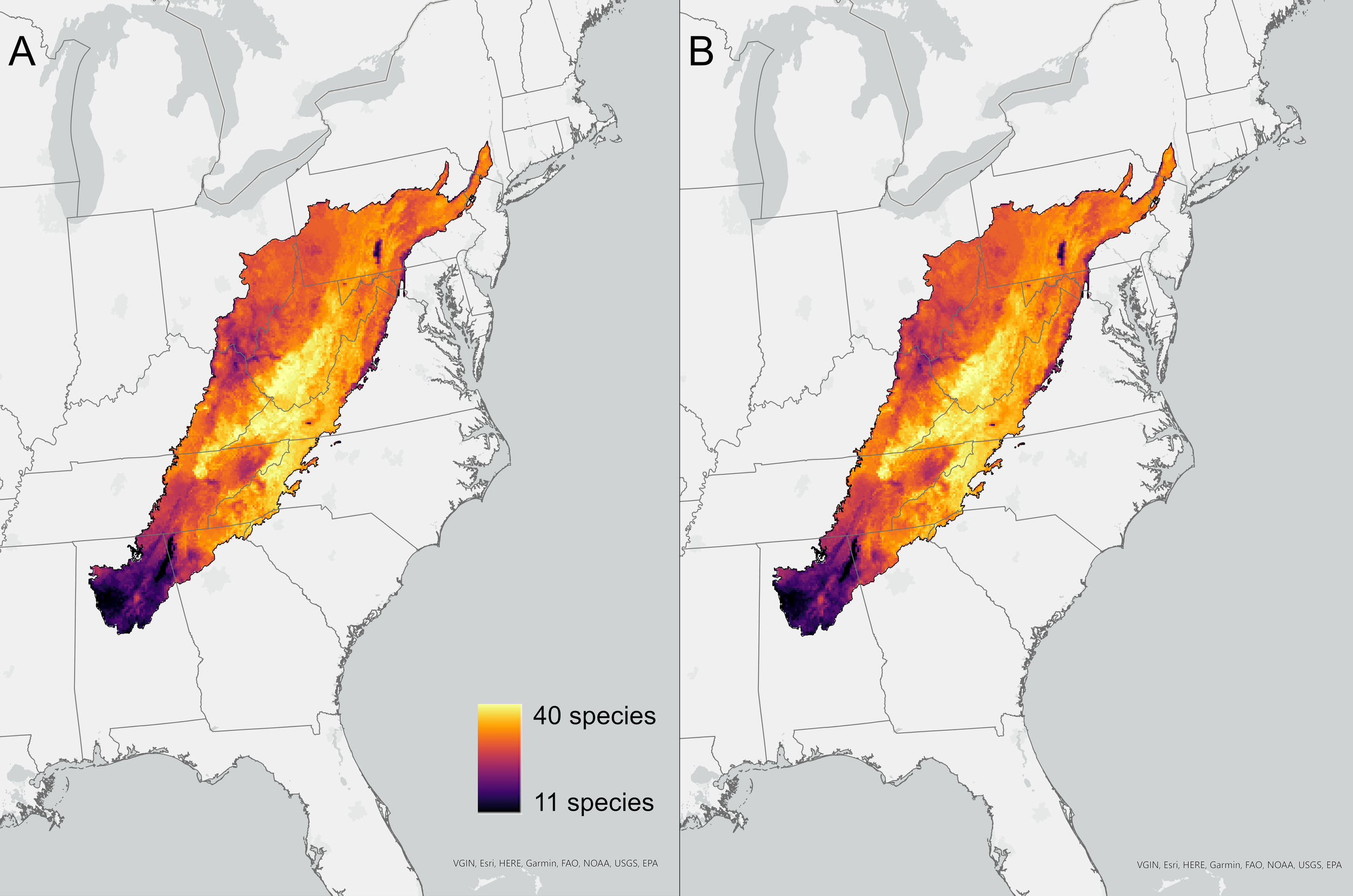Appalachians
appalachians
The Appalachian Mountains are among the oldest mountains on Earth, and have had a massive impact on the development of the ecosystems and culture of people who settled under its rugged peaks. It is known as a biodiversity hotspot, and displays a wide range of climates and many types of unique ecosystems and species. For a quick overview of why protecting key resources in the Appalachians is so crucial, consider this article from The Nature Conservancy!
— Priority Research Areas —
***Check out this interactive map of predicted mammalian species richness in Appalachian and the surrounding region!
Cartography by Lauren M. Lyon, 2023, University of Tennessee at Knoxville, Dept. of Ecology and Evolutionary Biology as part of the 2022 USGS Science to Action Fellowship
Workshops
publications
Kivlin, S. N., Harpe, V. R., Turner, J. H., Moore, J. A., Moorhead, L. C., Beals, K. K., ... & Schweitzer, J. A. (2021). Arbuscular mycorrhizal fungal response to fire and urbanization in the Great Smoky Mountains National Park. Elem Sci Anth, 9(1), 00037.
Le Bouille, D., Fargione, J., & Armsworth, P. R. (2022). Spatiotemporal variation in costs of managing protected areas. Conservation Science and Practice, e12697.
McKenzie, P. F., Iacona, G. D., Larson, E. R., & Armsworth, P. R. (2021). Partitioning tree diversity patterns to prioritize conservation investments. Environmental Conservation, 48(2), 75-83.
Zhu, G., Giam, X., Armsworth, P. R., Cho, S. H., & Papeş, M. (2022). Biodiversity conservation adaptation to climate change: protecting the actors or the stage. Ecological Applications, e2765.
Zhu, G., Papeş, M., Armsworth, P. R., & Giam, X. (2022). Climate change vulnerability of terrestrial vertebrates in a major refuge and dispersal corridor in North America. Diversity and Distributions.
Zhu, G., Papeş, M., Giam, X., Cho, S. H., & Armsworth, P. R. (2021). Are protected areas well-sited to support species in the future in a major climate refuge and corridor in the United States?. Biological Conservation, 255, 108982.





